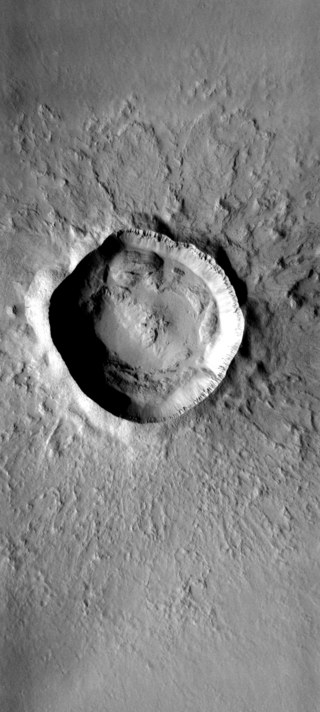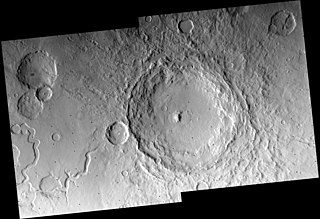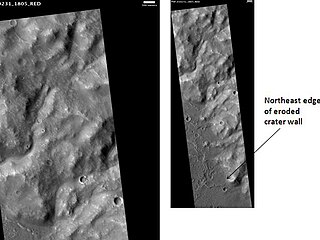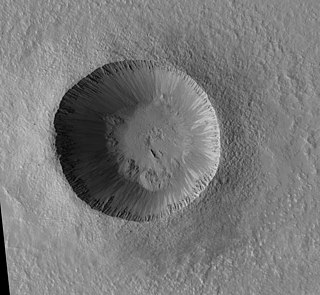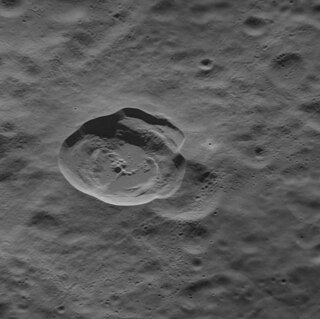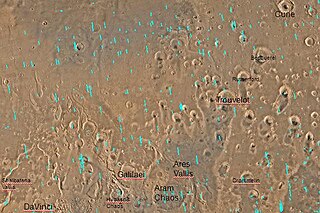Moon




This table lists the lunar impact craters that have ray systems. Crater names followed by a letter are satellite craters associated with the primary crater of the same name. The list is not comprehensive because there are hundreds or thousands of small craters with ray systems that are not named. A few unnamed craters photographed during the Apollo program are included.
| Crater | Latitude | Longitude | Diameter |
|---|---|---|---|
| Abbe H | 58.2° S | 177.9° E | 25 km |
| Abulfeda E | 16.7° S | 10.2° E | 6 km |
| Abulfeda Q | 12.8° S | 12.3° E | 3 km |
| Anaxagoras | 73.4° N | 10.1° W | 50 km |
| Aristarchus | 23.7° N | 47.4° W | 40 km |
| Aristillus | 33.9° N | 1.2° E | 55 km |
| Autolycus | 30.7° N | 1.5° E | 39 km |
| Bandfield | 5.40° S | 90.77° E | 1.0 km |
| Byrgius A | 24.5° S | 63.7° W | 19 km |
| Censorinus | 0.4° S | 32.7° E | 3.8 km |
| Chaplygin B (Chappy) | 4.08° S | 151.69° E | 1.5 km |
| Cleostratus J | 61.3° N | 83.8° W | 20 km |
| Copernicus | 9.7° N | 20.1° W | 93 km |
| Crookes | 10.3° S | 164.5° W | 49 km |
| Das | 26.6° S | 136.8° W | 38 km |
| Dionysius | 2.8° N | 17.3° E | 18 km |
| Encke X | 0.9° N | 40.3° E | 3 km |
| Fechner T | 59.1° S | 122.9° E | 14 km |
| Galilaei D | 8.75° N | 62.75° W | 0.9 km |
| Giordano Bruno | 35.9° N | 102.8° E | 22 km |
| Glushko | 8.4° N | 77.6° W | 43 km |
| Goddard A | 17.07° N | 89.71° E | 11 km |
| Godin | 1.8° N | 10.2° E | 34 km |
| Grigg E | 13.51° N | 125.68° E | 1.40 km |
| Guthnick | 47.7° S | 93.9° W | 36 km |
| Harpalus | 52.6° N | 43.4° W | 39 km |
| Hawke | 66.61° S | 128.65° E | 13.2 km |
| Herigonius K | 12.83° S | 36.46° W | 3.07 km |
| Jackson | 22.4° N | 163.1° W | 71 km |
| Janssen K | 46.19° S | 42.31° E | 15 km |
| Kepler | 8.1° N | 38.0° W | 31 km |
| King | 5.0° N | 120.5° W | 76 km |
| Kirch E | 36.5° N | 6.9° W | 3 km |
| Kirch G | 37.4° N | 8.1° W | 3 km |
| Korolev Z | 1.15° N | 159.48° W | 18 km |
| Langrenus | 8.9° S | 61.1° E | 127 km |
| La Condamine S | 57.3° N | 25.2° W | 4 km |
| La Pérouse A | 9.3° S | 74.7° E | 4 km |
| Larmor Q | 28.6° N | 176.2° E | 22 km |
| Lassell D | 14.5° S | 10.5° W | 2 km |
| Laue G | 27.8° N | 93.2° W | 36 km |
| Lichtenberg | 31.8° N | 67.7° W | 20 km |
| Lichtenberg B | 33.3° N | 61.5° W | 5 km |
| Linné | 27.7° N | 11.8° E | 2.4 km |
| Mee Q | 43.6° S | 33.9° W | 1 km |
| Messier (and Messier A) | 1.9° S | 47.6° E | 11 km |
| Moore F | 20.2° N | 176.1° W | 25 km |
| Necho | 5.0° S | 123.1° E | 30 km |
| Noggerath F | 48.0° S | 46.9° W | 9 km |
| North Ray | 8.82° S | 15.48° E | 0.95 km |
| Ohm | 18.5° N | 113.5° W | 64 km |
| Petavius B | 19.9° S | 57.1° E | 33 km |
| Petit | 2.3° N | 63.5° E | 5 km |
| Pierazzo | 3.3° N | 100.24° W | 9.29 km |
| Piton B | 39.3° N | 0.1° W | 5 km |
| Poincaré X | 53.8° S | 161.9° E | 19 km |
| Posidonius Y | 30.03° N | 24.91° E | 2 km |
| Proclus | 16.1° N | 46.8° E | 28 km |
| Reimarus H | 49.3° S | 62.3° E | 10 km |
| Ryder | 44.5° N | 143.2° E | 17 km |
| Shioli | 13.33° S | 25.23° E | 0.27 km |
| Sirsalis F | 13.5° S | 60.1° W | 13 km |
| South Ray | 9.15° S | 15.38° E | 0.7 km |
| Stella | 19.91° N | 29.76° E | 0.42 km |
| Stevinus A | 31.8° S | 51.6° E | 8 km |
| Taruntius | 5.6° N | 46.5° E | 56 km |
| Thales | 61.8° N | 50.3° E | 31 km |
| Timocharis | 26.7° N | 13.1° W | 33 km |
| Triesnecker | 4.2° N | 3.6° E | 26 km |
| Tycho | 43.4° S | 11.1° W | 102 km |
| Unnamed (within Balmer) | 18.93° S | 69.15° E | 1 km |
| Unnamed (within Daguerre) | 11.80° S | 33.14° E | 2 km |
| Unnamed (rim of Gibbs) | 17.48° S | 85.20° E | 5 km |
| Unnamed (west of Saenger) | 4.57° N | 101.14° E | 4 km |
| Vaughan | 41.41° S | 171.85° W | 3 km |
| Ventris M | 4.9° S | 158.0° E | 95 km |
| Wargo | 27.68° N | 148.62° W | 13.9 km |
| Werner D | 21.7° S | 3.2° E | 2 km |
| Zhinyu | 45.34° S | 176.15° E | 3.8 km |





